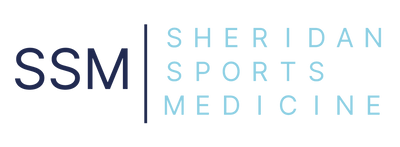Shoulder pain is a complex and multifaceted issue that can often have origins beyond the shoulder joint itself. While many people may associate shoulder pain with problems directly related to the shoulder, such as rotator cuff injuries or tendinopathy, it's essential to recognise that pain in the shoulder girdle and upper arm may also arise from the structures of the neck. Below is a brief summary of a number of causes of neck-related shoulder pain, exploring how these conditions can be diagnosed and managed effectively.
1) Cervical Nerve Root Compression (Brachalgia): One of the most common causes of neck-related shoulder pain is cervical nerve root compression, also known as brachalgia. This condition occurs when the nerves in the cervical spine (neck) become compressed or irritated, leading to radiating pain and/or altered sensation that travels down the shoulder and into the upper arm. Depending on the involved nerve roots it may travel further into the hand and fingers. Common causes of cervical nerve root compression include herniated discs and degenerative changes in the spine (spondylosis).
2) Facet Joint Pain: The facet joints are small joints located at the back of the spine that facilitate movement and provide stability. When these joints become inflamed or degenerated due to wear and tear, injury, or arthritis, they can cause localised neck pain as well as referred pain that radiates into the shoulder region.
3) Muscle Involvement: The muscles surrounding the shoulder girdle, neck, and upper thoracic spine play a crucial role in shoulder movement and stability. Dysfunctions in these muscles, such as trigger points or muscle imbalances including weakness or overactivity, can lead to referred shoulder pain. Commonly involved muscles include the upper trapezius, levator scapulae, sternocleidomastoid, scalenes, and rhomboids.
1) Thoracic Outlet Syndrome (TOS): Thoracic outlet syndrome is a rare condition characterised by compression of the neurovascular structures (nerves and blood vessels) as they pass through the thoracic outlet, located between the collarbone (clavicle) and first rib. This compression can result in shoulder pain, numbness, tingling, and weakness in the arm and hand. TOS may be caused by anatomical variations, such as cervical ribs or enlarged scalene muscles, as well as repetitive overhead activities or trauma.
2) Parsonage-Turner Syndrome (Brachial Neuritis): Parsonage-Turner syndrome, also known as brachial neuritis or neuralgic amyotrophy, is a rare neurological condition characterised by sudden, severe shoulder pain followed by weakness, atrophy (withering of the muscle), and sensory disturbances in the shoulder and upper arm muscles. The exact cause of Parsonage-Turner syndrome is unclear, but it is thought to involve an autoimmune reaction targeting the brachial plexus nerves (the origins of the nerves that supply sensation and movement throughout the arm and hand).
The diagnosis of neck-related shoulder pain requires a comprehensive evaluation by an experienced musculoskeletal clinician such as a sports medicine doctor, typically starting with a detailed medical history and physical examination. Special attention should be paid to the patient's symptoms, including the location, onset, duration, and exacerbating factors of their pain.
While X-rays can provide valuable information about bony structures and alignment, advanced imaging modalities such as MRI are often necessary to visualise the structures of the cervical spine, identify any anatomical abnormalities, and assess the extent of nerve compression or facet joint pathology.
Additionally, ultrasound imaging may be used to assess the muscles and soft tissues surrounding the shoulder girdle to exclude a true shoulder pathology such as an injury to the rotator cuff.
Treatment for neck-related shoulder pain very much depends on the underlying cause and may involve a combination of conservative therapies and interventional procedures. Common treatment options include:
1) Medication: Nonsteroidal anti-inflammatory drugs (NSAIDs), or neuropathic pain medications may be prescribed by your doctor to alleviate pain and inflammation associated with nerve compression or facet joint dysfunction.
2) Physical Therapy: Targeted exercises, stretching routines, and manual therapy techniques can help improve neck and shoulder mobility, strengthen supporting muscles, and correct postural imbalances.
3) Interventional Procedures: For patients with significant nerve compression or facet joint pathology, interventional procedures such as nerve root or facet joint steroid injections may be recommended to provide temporary pain relief and facilitate participation in physical therapy.
4) Lifestyle Modifications: Educating patients about proper posture, ergonomic principles, and lifestyle modifications is essential for managing neck-related shoulder pain. Simple strategies such as ergonomic workstation adjustments, ergonomic pillow use, and regular breaks from prolonged sitting or computer use can help alleviate symptoms and prevent recurrence.
Shoulder pain stemming from the neck can be complex and multifaceted. A thorough clinical evaluation by an experienced musculoskeletal clinician is needed to ensure the correct diagnosis is reached before before treatments are trialled. Understanding the various potential components of neck-related shoulder pain, from nerve compression to joint issues or chronic muscle overactivity and weakness is essential. Collaborating with a skilled MSK clinician ensures that patients receive comprehensive care and guidance on the most suitable interventions to alleviate their symptoms and address the underlying pathology.


